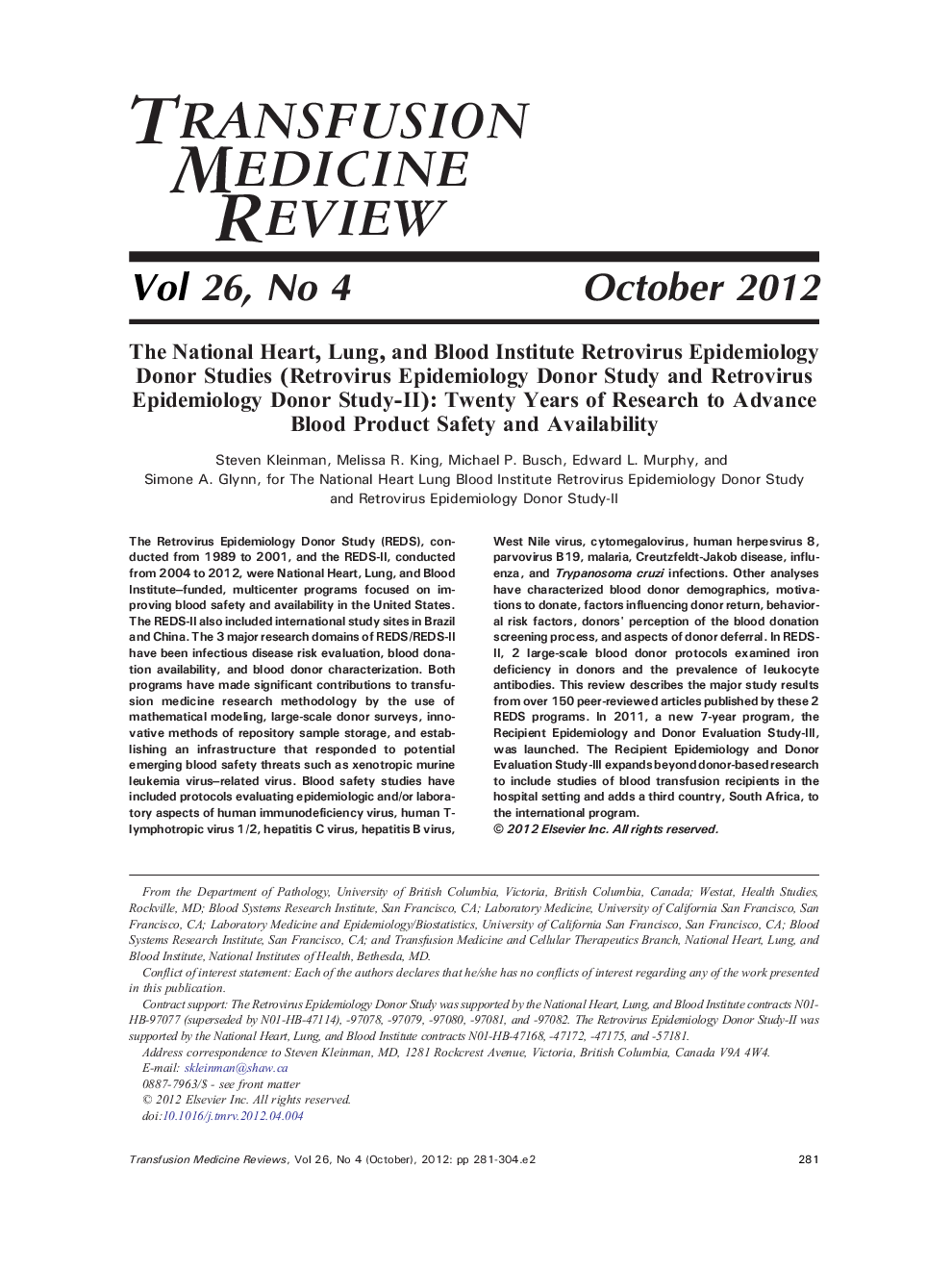| Article ID | Journal | Published Year | Pages | File Type |
|---|---|---|---|---|
| 3336534 | Transfusion Medicine Reviews | 2012 | 26 Pages |
Abstract
The Retrovirus Epidemiology Donor Study (REDS), conducted from 1989 to 2001, and the REDS-II, conducted from 2004 to 2012, were National Heart, Lung, and Blood Institute-funded, multicenter programs focused on improving blood safety and availability in the United States. The REDS-II also included international study sites in Brazil and China. The 3 major research domains of REDS/REDS-II have been infectious disease risk evaluation, blood donation availability, and blood donor characterization. Both programs have made significant contributions to transfusion medicine research methodology by the use of mathematical modeling, large-scale donor surveys, innovative methods of repository sample storage, and establishing an infrastructure that responded to potential emerging blood safety threats such as xenotropic murine leukemia virus-related virus. Blood safety studies have included protocols evaluating epidemiologic and/or laboratory aspects of human immunodeficiency virus, human T-lymphotropic virus 1/2, hepatitis C virus, hepatitis B virus, West Nile virus, cytomegalovirus, human herpesvirus 8, parvovirus B19, malaria, Creutzfeldt-Jakob disease, influenza, and Trypanosoma cruzi infections. Other analyses have characterized blood donor demographics, motivations to donate, factors influencing donor return, behavioral risk factors, donors' perception of the blood donation screening process, and aspects of donor deferral. In REDS-II, 2 large-scale blood donor protocols examined iron deficiency in donors and the prevalence of leukocyte antibodies. This review describes the major study results from over 150 peer-reviewed articles published by these 2 REDS programs. In 2011, a new 7-year program, the Recipient Epidemiology and Donor Evaluation Study-III, was launched. The Recipient Epidemiology and Donor Evaluation Study-III expands beyond donor-based research to include studies of blood transfusion recipients in the hospital setting and adds a third country, South Africa, to the international program.
Related Topics
Health Sciences
Medicine and Dentistry
Hematology
Authors
Steven Kleinman, Melissa R. King, Michael P. Busch, Edward L. Murphy, Simone A. Glynn,
